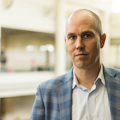If the Environmental Protection Agency aimed to create a hard-to-achieve regulation that makes trucking more expensive, it succeeded with GHG3. If regulators and the environmentally focused Biden Administration want to clean up the air, they need to work more closely with the men and women moving our goods across the country—not against them.
Federal regulators finalized Phase 3 of the lofty Greenhouse Gas Emissions Standards, known as GHG3, on March 29. These new rules push commercial vehicle manufacturers to build and sell more zero-emission equipment to fleets. The regulations envision a nationwide freight network supporting Class 8 EVs and hydrogen-powered trucks. It’s an exciting vision, but exciting doesn’t make it realistic.
Rather than letting truck OEMs and the free market lead us into decarbonization, the EPA is telling OEMs they must sell more zero-emission commercial vehicles between 2027 and 2032. Forget offering fleets a carrot to encourage them to improve freight’s carbon footprint. This stick approach whacks away any thoughts of reasonable timelines to build out alternative fuel infrastructure to support trucking, the backbone of the U.S. economy.
Even before the feds finalized GHG3, the parent corporations of all seven major U.S. truck OEMs already have plans to be carbon-neutral by 2050 and have similar plans to sell all net-zero-emission vehicles in the U.S. by 2040. The companies understand—better than the EPA—that the trucking industry is still waiting to see an ROI case for ZE technology. The EPA apparently just wants to cut the exhaust and thinks that will solve climate problems without considering the operational problems it could create.
See also: Closer look: Heavy-duty engine trends
Stricter emissions standards lead to less adoption
Fleets are right to worry about GHG3 because it all comes down to costs—something federal regulators might not understand. Most trucking operations survive on razor-thin margins and can’t afford to invest in new, expensive technologies. Just look at what happened the last time the EPA drastically changed heavy-duty diesel standards.
Back in 2007, regulators created what were the most stringent emissions standards to date. Those regulations, which took effect in 2010, dramatically decreased particulate matter (soot and ash) and nitrogen oxide discharges, virtually eliminating these emissions from on-road diesel engines.
See also: NACFE releases report on the viability of fleets fueled by natural gas
Those regulations succeeded in getting OEMs to produce the cleanest diesel equipment ever. To do so, manufacturers modified engines for cleaner combustion and added exhaust aftertreatment devices to remove pollutants after they leave the engine’s combustion chamber. Meeting the reduced pollution standards also required diesel fuel to convert to ultra-low sulfur and engine oils to be reformed.
These technological advancements succeeded in cutting emissions—but they also made new trucks more expensive to buy, operate, and maintain. This is why nearly half of all over-the-road Class 8 trucks operating today were built before 2010. In California, where the strictest regulations rule, more than half of heavy-duty trucks predate 2010, according to the American Trucking Associations. ATA points out that upgrading those trucks to modern diesels would reduce California fleet emissions by 83%. It contends that cutting the federal excise tax, which adds 12% on top of the cost of new heavy-duty trucks, would be more incentive for truckers to adopt cleaner diesel technology.
These new 2027 emissions standards risk creating a new dividing line in trucking. Fifteen years from now, will the U.S. freight industry be dominated by zero-emission trucks quietly zipping around the nation? Or will we see a repeat of the 2010 adoption rate? With the onus on manufacturers to sell more zero-emission equipment—trucks that can cost more than twice as much as traditional commercial vehicles—fleets might only be encouraged to hold on to pre-2027 models.
See also: It’s not too early to think about your fleet’s future power
While the mega fleets can afford to experiment with—but not convert to—Class 8 EVs and dip their toes into emerging hydrogen fuel-cell technology, most fleets cannot. After all, more than 95% of trucking fleets are small businesses that cannot afford to be on the cutting edge.
According to a Clean Freight Coalition study released a week before the EPA finalized GHG3, the U.S. must invest $620 billion in charging infrastructure to convert all local medium- and heavy-duty vehicles to electric. Utility companies, which right now don’t have the energy to power a nationwide fleet of EVs, need about $370 billion in upgrades, according to the CFC study. That equates to an average charging infrastructure investment of $145,000 per heavy-duty vehicle and $54,000 per medium-duty vehicle.
That $1 trillion price tag is daunting—and it’s a price that will be passed on to consumers. If the 2010 rules are any indication, it’s a cost that many fleets will push further into the future.
About the Author
Josh Fisher
Editor-in-Chief
Editor-in-Chief Josh Fisher has been with FleetOwner since 2017. He covers everything from modern fleet management to operational efficiency, artificial intelligence, autonomous trucking, alternative fuels and powertrains, regulations, and emerging transportation technology. Based in Maryland, he writes the Lane Shift Ahead column about the changing North American transportation landscape.

